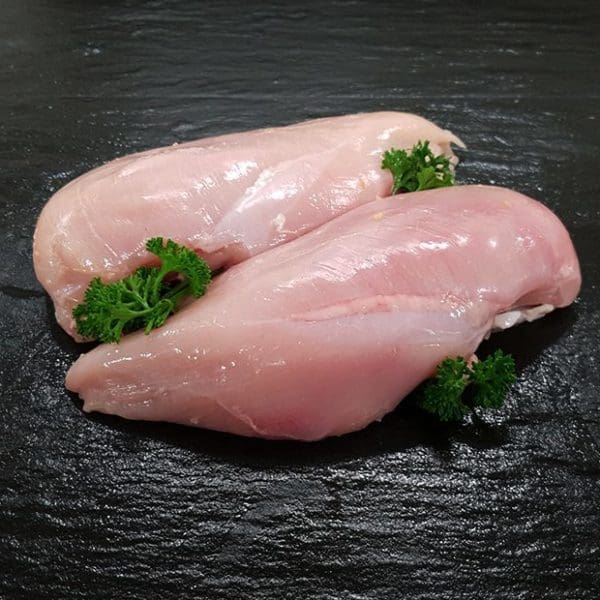Selecting the Ideal Cut of Meat
An in-depth guide on choosing the best meat cuts based on marbling, fat content, tenderness, and flavour.
Selecting the Ideal Cut of Meat
As a culinary enthusiast, you know the importance of selecting the best cuts of meat to create delicious and successful meals. The cut you choose can significantly impact the tenderness, flavour, and overall satisfaction of your dish. This comprehensive guide will provide you with the knowledge you need to make the most informed decisions when selecting your meat cuts.
Understanding the Key Factors in Choosing Meat Cuts
Before diving into the specifics of individual cuts, it’s important to get a firm grasp on the key factors that influence the quality and suitability of a cut of meat.
Marbling
Marbling, or the small white streaks of fat within the meat, plays a crucial role in determining a cut’s tenderness and flavour. As the meat cooks, the fat renders, permeating the meat with a rich, succulent flavour. The more marbling, the more flavourful and tender the meat will be.
Fat Content
While marbling is the internal fat, the fat content also includes the external fat layer. Like marbling, the fat content contributes to flavour and tenderness, enhancing the juiciness of the meat as it cooks.
Tenderness
Tenderness is determined by the muscle’s usage during the animal’s life. Cuts from areas where muscles are used less, like the loin or rib, tend to be more tender than those from heavily worked areas like the shoulder or leg.
Flavour
The animal’s diet, breed, age, and the cut itself all influence the flavour of the meat. Cuts from different parts of the animal can have unique flavour profiles, allowing for a variety of taste experiences.
Choosing the Best Cuts of Meat
Now that you understand the critical factors influencing meat quality let’s delve into the specifics of some popular cuts.
Ribeye
A favourite among many meat lovers, the ribeye cut is known for its rich flavour and ample marbling. This cut is perfect for grilling, delivering a tender and flavourful bite.
Sirloin
The sirloin cut is leaner than the ribeye but still offers a medium-level marbling. It’s a versatile cut that can be grilled, pan-seared, or roasted.
Filet Mignon
Considered one of the most tender cuts of meat, filet mignon is a small section of the tenderloin. This cut has a milder flavour, making it ideal for those who prefer a more subtle taste.
Flank Steak
The flank steak is cut from the lower chest or upper abdominal area of the animal. This lean cut can become extremely tender and flavourful when cooked properly, making it an excellent choice for dishes that require shredded or pulled meat.
Beef Chuck Primal Cut
The beef chuck primal cut comes from the shoulder, arm, and chest sections of the animal. It yields several prime cuts, like Denver steak and blade steak, which are best used for slow-cooked dishes like roasts.
Custom Cuts from Your Local Butcher
One of the benefits of shopping at your local butcher is the ability to request custom cuts of meat. The butcher can provide specific cuts depending on your preferences and the dish you’re preparing.
Selecting the Best Quality Meat
In addition to choosing the right cut, you also want to ensure the meat you select is of high quality. Look for fresh meat with a bright colour and firm texture. Check the packaging for any signs of damage or tampering.
Understanding the USDA Beef Grading System
The United States Department of Agriculture (USDA) inspects and grades meat during the butchering process. For beef, the grades are Prime, Choice, and Select. Prime and Choice grade beef have higher marbling content, resulting in juicier, more flavourful meat after cooking.
Cooking Your Select Cut
The method you use to cook your chosen cut will affect the final result. Lean and tender cuts should be cooked less than rich and tough cuts. This can range from grilling, pan-searing, broiling, and roasting to slow-cooking methods like braising or smoking.
Seasoning Your Cut
Aside from the cooking method, the way you season your meat also plays a significant role in the final taste. A simple seasoning of salt and pepper can enhance a good steak, particularly for a loin cut. For more complex dishes, you can explore a variety of spice blends and marinades.
Storing Your Cut
Proper storage is key to maintaining the freshness and quality of your meat. If you’re not planning to cook your meat immediately, it’s best to store it in a refrigerator at a temperature below 40°F (4°C). For long-term storage, you can freeze your meat.
Conclusion
Selecting the right cut of meat is an art that requires knowledge and understanding. By considering factors like marbling, fat content, tenderness, and flavour, you can choose the perfect cut for your dish. Don’t hesitate to consult your local butcher for expert advice and custom cuts. With the right selection and preparation, you can create delicious and satisfying meals that will impress your guests.


Buy & Order Online
Shop Now
Our 100% Australian owned and operated wholesale butcher has been a major supplier for Sydney’s restaurants, cafes and butchers over the last 20 years.
%


